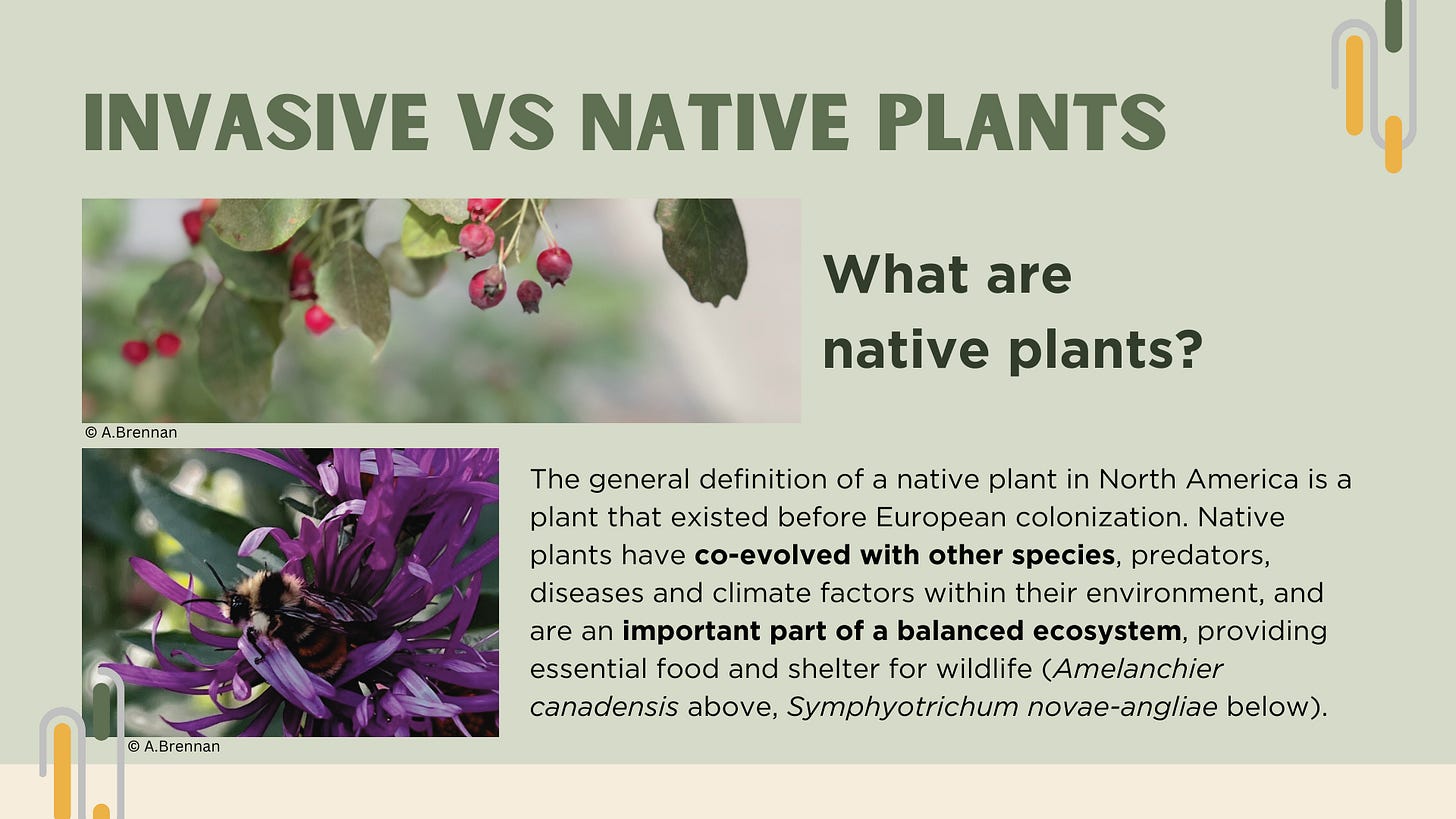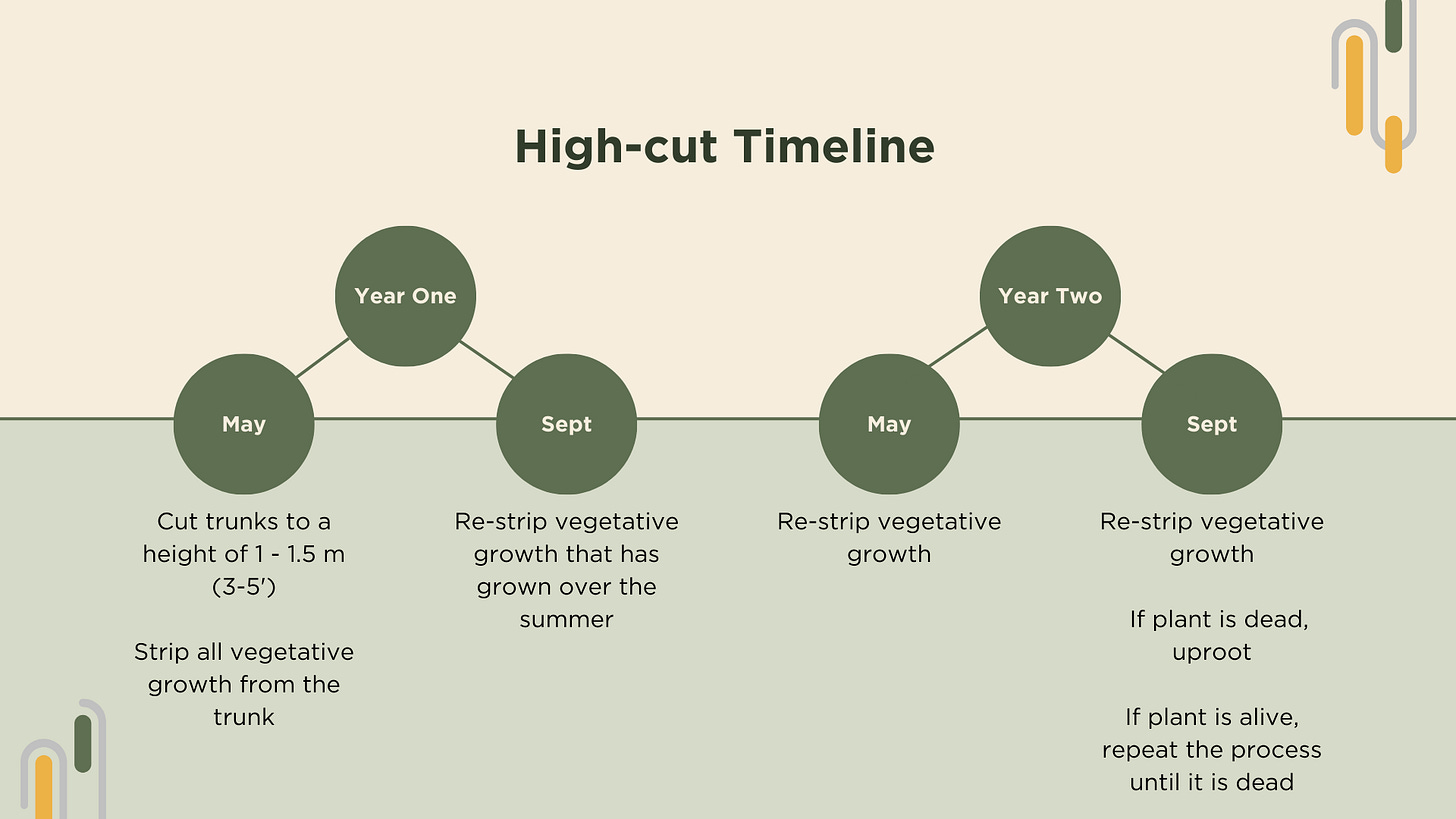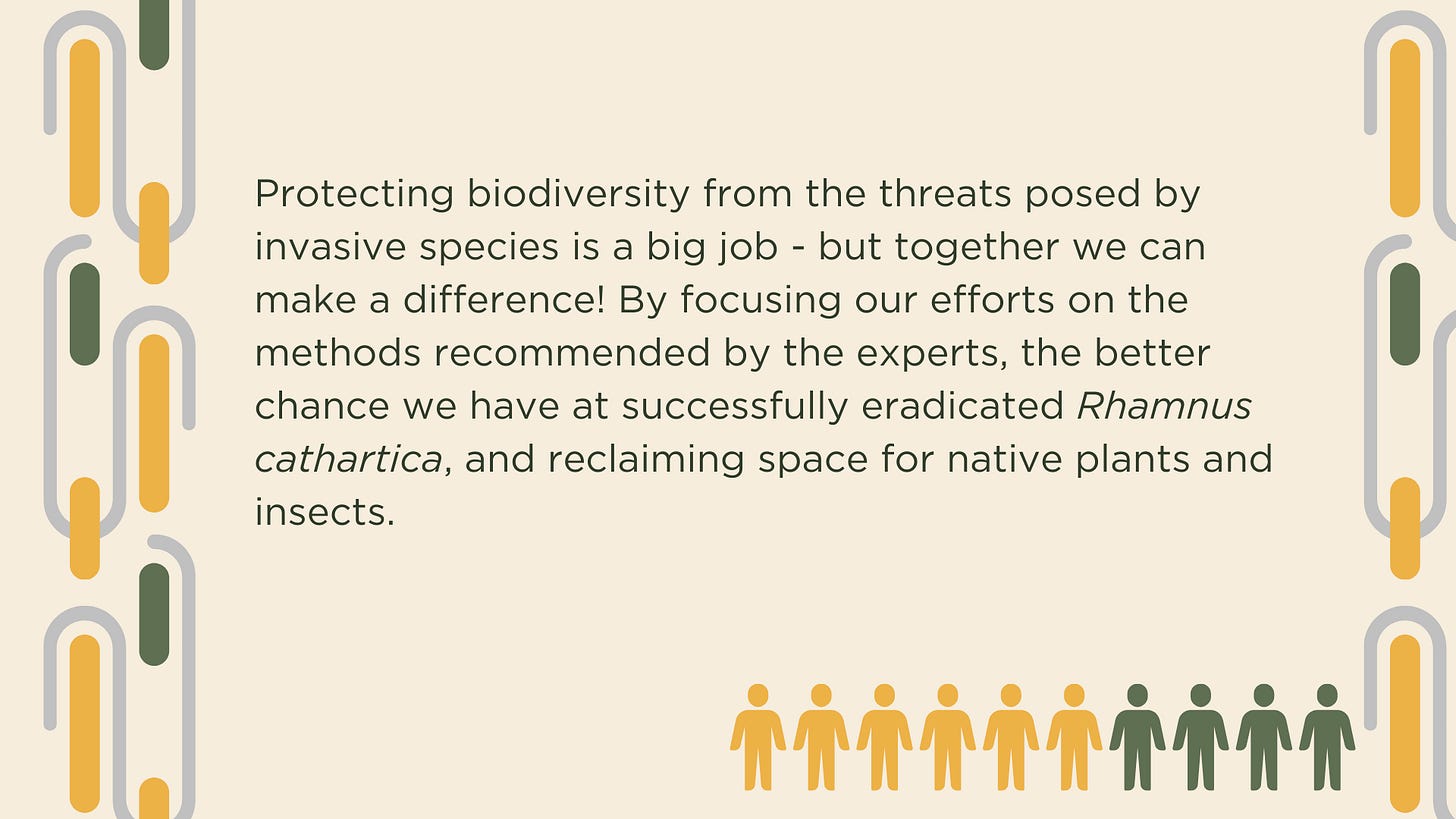Biodiversity Killers - Episode 1: European Buckthorn
Invasive plants are wreaking havoc all over the world; disrupting ecosystems and reducing biodiversity. Let's look into the issues of European buckthorn and some recommended management strategies.
In North America, there is a long list of plants that were introduced from Europe and Asia. Unfortunately, many of them have the characteristics of being invasive in their new location and have been actively outcompeting native species, reducing biodiversity and setting ecosystems out of balance. This series will look deeper into the worst offenders and the recommended best practices for their management.
While there are two invasive buckthorn species (Rhamnus cathartica/European buckthorn and Frangula alnus/glossy buckthorn) causing problems in eastern and central North America, we’ll just be looking into European buckthorn in this episode.
When buckthorn is left to spread unchecked, the dense thickets block sunlight from reaching the forest floor. Not only does this block spring ephemerals (trilliums, trout lilies, etc) from growing and providing early season pollen and nectar to early season bees, it also blocks tree seedlings from germinating. If the forest can’t regenerate by reseeding, once the existing trees eventually fall, all that will be left is a biodiversity dead zone of buckthorn.
Even if buckthorn is growing in a residential or urban area, the seeds can easily be spread to nearby forests by birds.
European buckthorn has been around for awhile and ecologists and conservationists have been studying the best methods for managing different sizes and ages of populations. This episode focuses on digging, mowing and pulling and the ‘high-cut’ method that has recently proven successful in eradicating buckthorn, but there are other methods, including covering stumps with black plastic to block sunlight, chemical and biological controls and girdling.
The following high-cut timeline is specific to southwest Quebec and eastern Ontario. Timelines will vary by region - the purpose is to cut the plants in spring (after they’ve used a lot of stored energy resources to grow leaves but before they flower) and again in the fall (after they’ve used a lot of energy resources to grow new shoots, but before leaves naturally fall); depending on location this could be early April and early October.





















